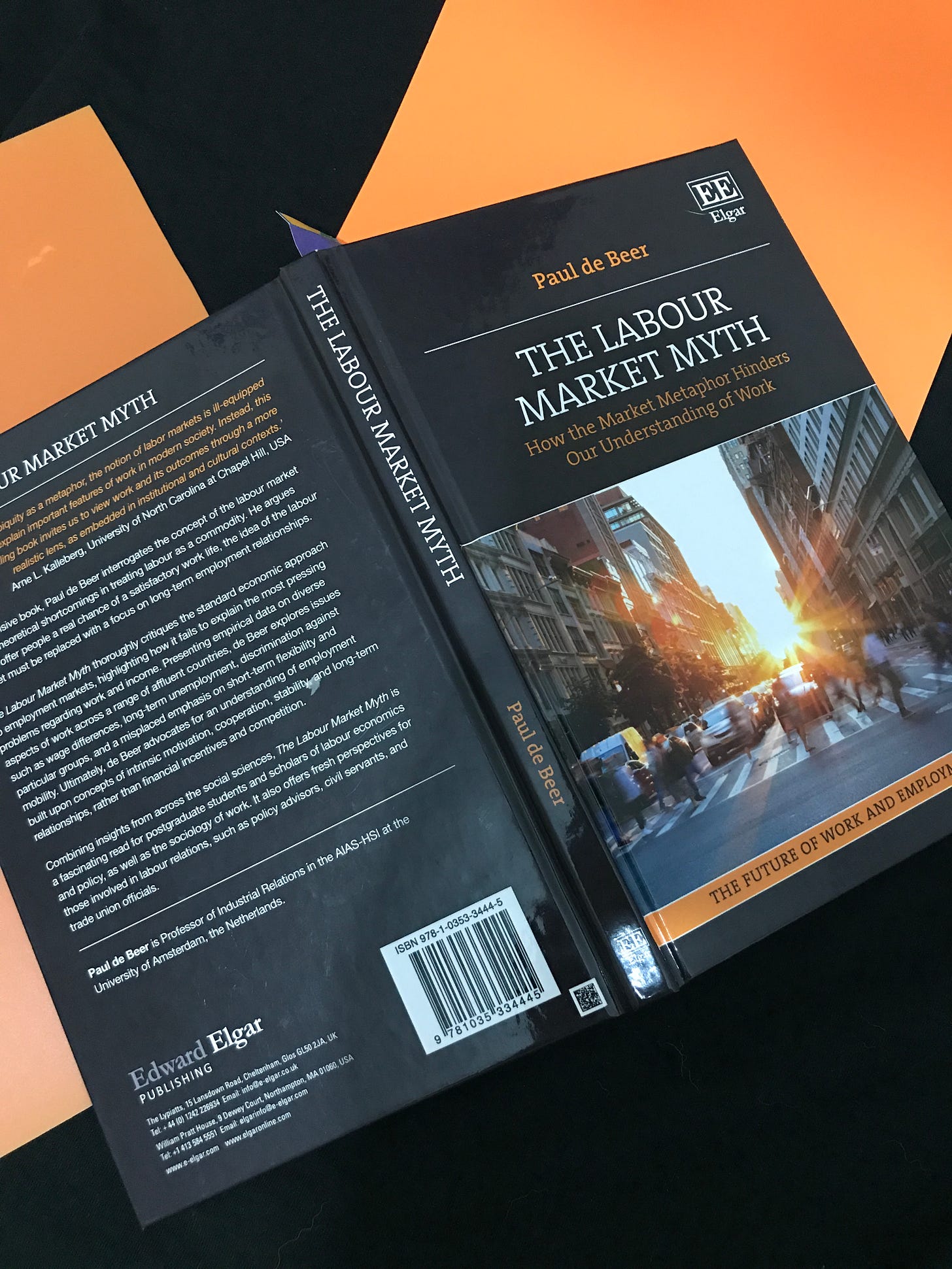The Labor Market Myth
Book Review
Paul de Beer: “The Labor Market Myth” - How the Market Metaphor Hinders Our Understanding of Work, Edward Elgar Publishing, 2025, UK.
We are told every day that jobs belong to a “labor market.” Politicians, economists, and journalists speak of it as if it were a farmers’ market for potatoes: workers supply labor, firms demand it, and wages are the price that balances the two. If demand exceeds supply, wages rise. If supply exceeds demand, wages fall. Simple, neat, efficient.
The trouble is, this picture is a myth. The “labor market” is not a market — and treating it as one blinds us to how work and wages actually function.
The false promise of equilibrium
Textbook economics insists that shortages of workers should automatically push up wages, while surpluses of workers should drive them down. In practice, neither mechanism works smoothly. Wages are famously “sticky.” Firms often resist raising pay even when labor is scarce, preferring to squeeze more out of existing staff, automate, or outsource. On the other side, workers rarely accept pay cuts without protest. They quit, unionize, or disengage.
The very idea of a neat equilibrium is misleading: labor is not a sack of potatoes to be bought and sold at auction, but human effort embedded in institutions, contracts, and power relations.

Why wage cuts destroy jobs
In standard market theory, supply and demand curves are independent. But in the case of labor, they are deeply entangled.
If wages fall, households have less income. Less income means less demand for goods and services. And when demand collapses, firms don’t hire more workers — they lay them off. What is supposed to be the cure (lower wages) ends up making the disease (unemployment) worse.
The two curves are not independent at the macro level. Wage cuts do not “clear the market.” They shrink it.
The productivity myth
Another illusion is that wages reflect productivity — that each worker is paid according to their marginal output. In reality, this is almost impossible to measure in a modern service economy. How do you quantify the productivity of a teacher, a nurse, or a CEO? Even in manufacturing, output is the result of teamwork, technology, and organisation, not the isolated effort of an individual worker.
Wages are not determined by productivity. They are determined by bargaining power, institutions, and political choices. The author lists at least four factors that play a decisive role: “your category, your relationship, chance and your current position”. The productivity story is a comforting fiction that hides the real mechanisms of wage-setting.
Why the metaphor is harmful
The labor-market metaphor is not just inaccurate; it is damaging. It reduces human work to a commodity and legitimises policies that treat unemployment as a natural outcome of market forces, rather than as the product of policy and power. It suggests that suppressing wages is a path to efficiency, even though it undermines demand and weakens the economy.
By framing jobs as a “market outcome,” it absolves policymakers of responsibility. If unemployment is just a mismatch between supply and demand, then governments need not intervene. But if work is not a market, then unemployment is a choice — the result of austerity, underinvestment, or misguided policies.
Beyond the myth
There is no such thing as a perfect labor market, and it is not clear that we would want one if it did exist. Treating human effort as a commodity like wheat or steel misses what work really means: security, dignity, and participation in society.
The “labor market” is a myth. And clinging to it blinds us to the real forces that shape jobs, wages, and prosperity. What we need instead is a framework that recognizes employment as a social and macroeconomic institution — something far too important to be left to the imaginary curves of supply and demand.
Bottom Line
The "price mechanism" model has long misinterpreted the causes and remedies of unemployment. Paul de Beer, Professor at AIAS-HSI, section Labor Law at University of Amsterdam, the Netherlands, provides an illuminating account of this failure and presents a brilliant and clear presentation of the inherent logic of the "labor market." A must-read; masterwork.

